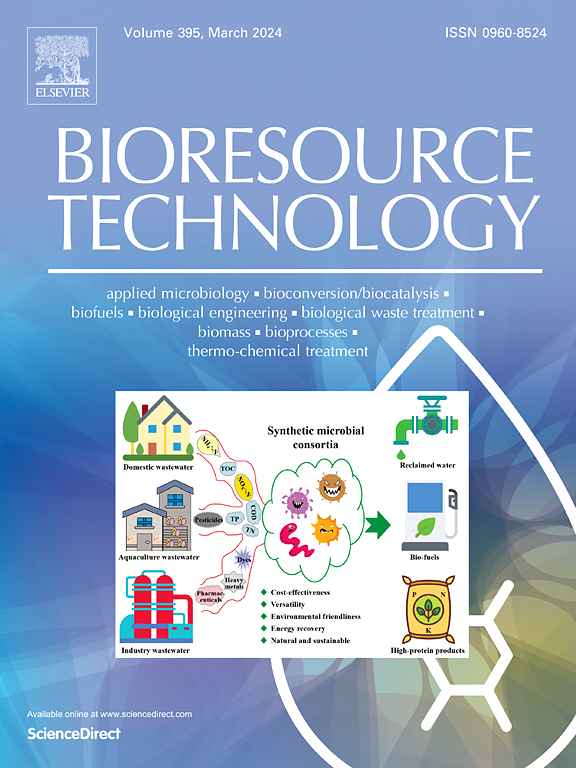Novel strategy for recovering phosphorus from sulfate-rich wastewater combined with phosphogypsum recycling
IF 9
1区 环境科学与生态学
Q1 AGRICULTURAL ENGINEERING
引用次数: 0
Abstract
With global phosphorus depletion, recovering PO43− from papermaking wastewater is crucial. However, high SO42− hinders removal efficiency. This study proposes a novel strategy for recovering of PO43− from papermaking wastewater combined with phosphogypsum recycling to form hydroxyapatite (Ca5(PO4)3OH), using sulfur-metabolizing bacteria to address SO42−. Optimally, 0.1 g phosphogypsum achieved 95 % PO43− recovery. During the chemical stage, PO43− decreased at a rate of 0.0556 d−1 through phosphogypsum hydrolysis and subsequent adsorption. During the biological reaction stage, sulfate-reducing bacteria, represented by Desulfobacteraceae, biologically transform SO42− in phosphogypsum into S2− while increasing alkalinity. Subsequently, sulfate-oxidizing bacteria, represented by Alcaligenaceae, biologically oxidize S2−, releasing accumulated polyphosphate to PO43−. Finally, the Ca2+ released from phosphogypsum declined PO43− from wastewater at rates of 0.0479 d−1 to form hydroxyapatite. Given that hydroxyapatite and phosphogypsum are critical raw material and product for wet-process H3PO4 production, this strategy establishes a closed-loop cycle for sustainable phosphorus recovery.

结合磷石膏回收富硫酸盐废水中磷的新策略
随着全球磷的消耗,从造纸废水中回收PO43−至关重要。然而,高SO42−阻碍了脱除效率。本研究提出了一种从造纸废水中回收PO43−并结合磷石膏回收形成羟基磷灰石(Ca5(PO4)3OH)的新策略,利用硫代谢细菌处理SO42−。最佳情况下,0.1 g磷石膏的PO43−回收率为95 %。在化学阶段,PO43−通过磷石膏水解和随后的吸附以0.0556 d−1的速率下降。在生物反应阶段,以Desulfobacteraceae为代表的硫酸盐还原菌将磷石膏中的SO42 -生物转化为S2 -,同时提高碱度。随后,以Alcaligenaceae为代表的硫酸盐氧化细菌对S2−进行生物氧化,将积累的多磷酸盐释放为PO43−。最后,磷石膏释放的Ca2+以0.0479 d−1的速率降低废水中的PO43−,形成羟基磷灰石。鉴于羟基磷灰石和磷石膏是湿法生产H3PO4的关键原料和产品,该策略建立了一个可持续磷回收的闭环循环。
本文章由计算机程序翻译,如有差异,请以英文原文为准。
求助全文
约1分钟内获得全文
求助全文
来源期刊

Bioresource Technology
工程技术-能源与燃料
CiteScore
20.80
自引率
19.30%
发文量
2013
审稿时长
12 days
期刊介绍:
Bioresource Technology publishes original articles, review articles, case studies, and short communications covering the fundamentals, applications, and management of bioresource technology. The journal seeks to advance and disseminate knowledge across various areas related to biomass, biological waste treatment, bioenergy, biotransformations, bioresource systems analysis, and associated conversion or production technologies.
Topics include:
• Biofuels: liquid and gaseous biofuels production, modeling and economics
• Bioprocesses and bioproducts: biocatalysis and fermentations
• Biomass and feedstocks utilization: bioconversion of agro-industrial residues
• Environmental protection: biological waste treatment
• Thermochemical conversion of biomass: combustion, pyrolysis, gasification, catalysis.
 求助内容:
求助内容: 应助结果提醒方式:
应助结果提醒方式:


